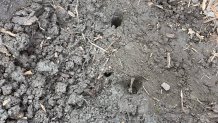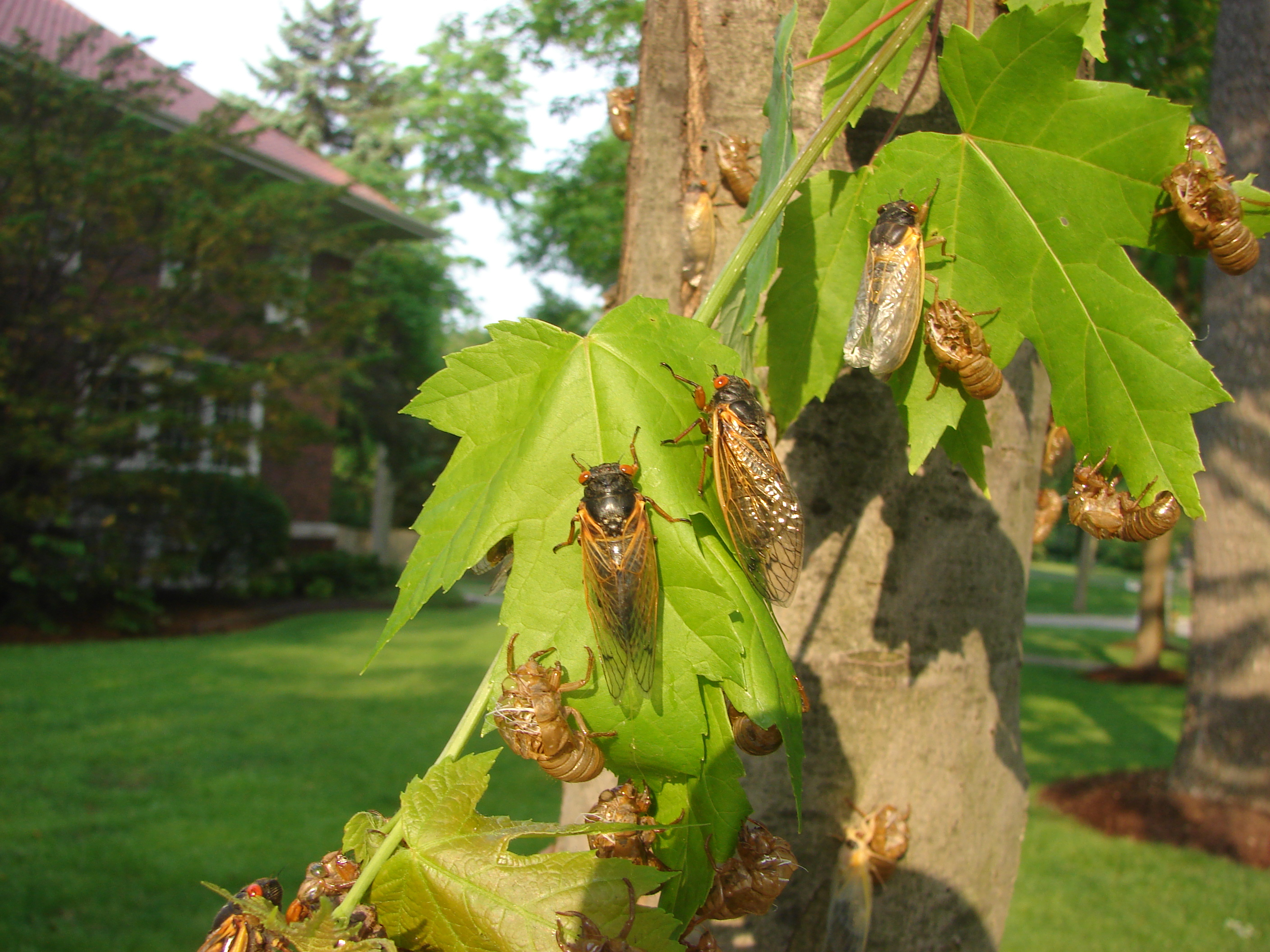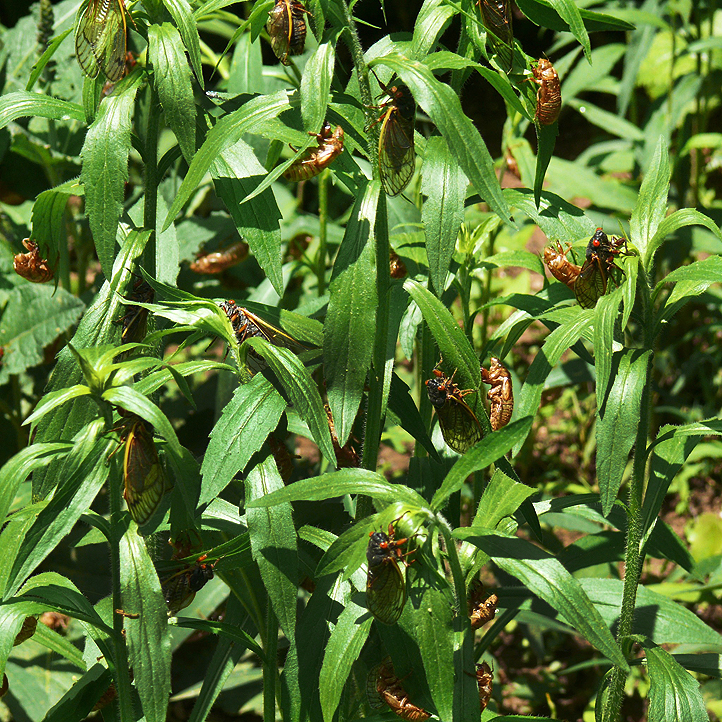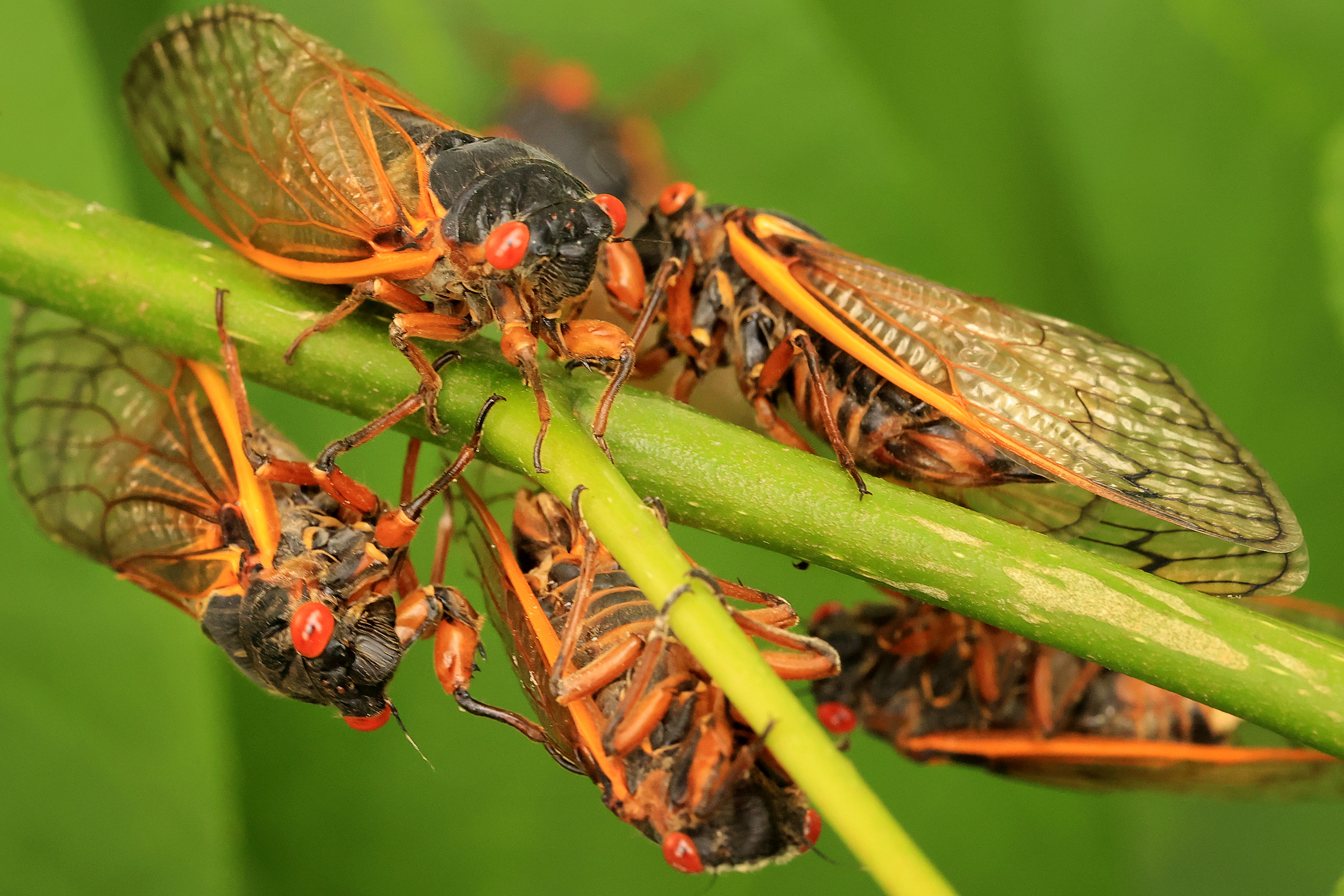Cicadas have already started making their way to surface ahead of their highly anticipated emergence in the Chicago area this spring -- but what does that mean and how soon could peak cicada season begin?
Billions of the insects from two broods are set to crawl up from the ground this spring and summer and many in the Chicago area have already noticed the beginning of their arrival, meaning the emergence is closer than you may think.
Sightings of cicadas, many still in the ground, have already been reported in numerous parts of the city and suburbs.
A wall of what may be cicadas was spotted over the weekend on Wisconsin Avenue in Chicago's Lincoln Park and Old Town Triangle neighborhoods.
In Downers Grove, gardeners reported seeing several just underneath the surface in the soil.
NBC 5 Investigates reporter Bennett Haeberle captured images of several cicadas seen while gardening over the weekend.



A Reddit post from a resident said to be in a southern Chicago suburb showed video of numerous cicadas in the ground.
Feeling out of the loop? We'll catch you up on the Chicago news you need to know. Sign up for the weekly Chicago Catch-Up newsletter here.
"Working in the yard this afternoon I decided to move some bricks that were next to the neighbors [sic] fence. I’m sure they hadn’t been moved in at least a decade," the caption read. "Anyway, if what I videoed is any indication then the cicada brood under my yard is going to be a massive emergence. Each little hole you see has a ready to emerge larva, you’ll even see a couple larva at the end. Dang is it going to get loud."
Some experts say that may be a sign not that the cicadas are emerging just yet, but that they are digging tunnels to prepare for their emergence once soil temperatures reach the right levels.
"It's just an opportunity for people to look in their own properties, in their backyards, or in the parks or something like that, to see if they can find these exit tunnels too. And it's an indication that if the exit tunnels are present, sometimes the cicadas are also visible at the same time, too," said Tom Velat with the DuPage County Forest Preserve.
Velat noted that while signs of cicadas may be visible, there isn't enough information yet to determine just how big an emergence will be in the area.
"You're going to have the cicada emergence, we just don't know how big it will be. Just by looking at the tunnels, you can't determine how many you're going to have throughout the county, because you have to look at historical records and kind of figure that part out," he said.
Still, some have speculated that cicadas could wind up emerging earlier than expected thanks to climate and warmer temperatures, experts say.
"It's possible," Allen Lawrance, associate curator of entomology at the Peggy Notebaert Nature Museum in Chicago, said, of periodical cicadas potentially coming out early. "These are big populations of cicadas. Given their huge numbers there are bound to be at least a few individuals emerging early regardless, but weather can play a role."
Cicadas have a lifespan of approximately four weeks and typically emerge in mid-to-late May and into June, as the ground begins to warm in the spring and early summer. A post from the National Weather Service said the emergence can often depend on soil temperature.
"Research shows that the particular night of the periodical cicadas’ emergence depends on soil temperature," the post read. "Cicada juveniles, or nymphs, emerge after a rainstorm when the soil temperature at 8 inches in depth exceeds approximately 64°F."
In Missouri, where strong storms Tuesday were expected to soak the ground with warm rain, soil temperatures could rise and push past the 64-degree mark, according to a report from NBC Affiliate KSDK in St. Louis.
Another sign that could lead to an early emergence, KDSK said, is how early certain flowers bloom.
"The emergence of the purple flowers tends to coincide with the cicada emergence," the report said. "The Missouri Botanical Garden said some of the garden's irises bloomed as early as April 10."
Timing: How early could cicadas emerge in Illinois?
According to Lawrance, the 17-year cicadas -- Brood XIII, which will emerge all across Northern Illinois, including the Chicago area -- are expected to emerge around mid-May. Warmer weather could push this timeframe earlier, Lawrance said, but only if it's enough to push soil temperatures above the 64 degree threshold.
"A warm rain at the right time will often kick off their mass emergence," Lawrance said. "So we will have to see."
In Chicago officials, issued an advisory earlier this month, saying the first emergence is expected sometime around late April through early June. The advisory also said that neighborhoods and areas with older homes could see a bigger impact.
In suburban Lake Forest, officials said "cicadas will be emerging in April/May/June, depending on weather conditions."
When it comes Brood XIX the 13-year periodical cicadas set to emerge in the central and southern part of the state, cicadas could surface even sooner.
"The 13-year periodical cicadas of Brood XIX may emerge a little earlier," Lawrance said. "Across parts of their range further south they typically begin emerging in mid-April."
Lawrance added that some have already reported seeing adult cicadas in Georgia and the Carolinas, but that "the floodgates have yet to open."
Whether or not they come early, some parts of the cicadas will stick around longer than their lifespan, experts say.
"Adult cicadas will be active until mid- to late-June, but you will see evidence long after they are gone, including their wings, molts, and decomposing bodies," cicada expert Catherine Dana, an affiliate with the Illinois Natural History Survey, told NBC Chicago.
Where will the two broods be seen?
The Northern Illinois Brood, or Brood XIII, will be most seen in parts of northern Illinois and Indiana, and possibly even in Wisconsin, Iowa and parts of Ohio. This brood will be the most prominent in the Chicago area for the upcoming emergence, experts say. But distribution will be patchy.
"Not every neighborhood is going to be as dense with them as others," he said. "One area may be slightly more quiet, and you'll hear them in the distance. And then you go to the next neighborhood, and it's hoppin', and they're everywhere."
There is one determining factor, however: If they were there before, they'll be there again.
"So, which neighborhoods you would expect to find them in will depend on where they were last time they emerged," Lawrance said. "If the soil had been completely dug up and replaced due to construction, there may be fewer cicadas there. But if they were there last time, chances are, they'll still be there."
Meanwhile, Brood XIX, or the Great Southern Brood cicadas, have a more widespread population, covering parts of Missouri, Illinois, Louisiana, North Carolina, Virginia and Maryland.
"Brood XIX is arguably the largest (by geographic extent) of all periodical cicada broods, with records along the east coast from Maryland to Georgia and in the Midwest from Iowa to Oklahoma," the University of Connecticut reports. "Although 13- year cicadas are generally considered to have a southern distribution, the northernmost known record of this brood is in Chebanse, IL, roughly 75 miles from Chicago’s Loop."
While the two broods have different emergence regions, there could be some locations that see an overlap of both.
"Somewhere around Central Illinois, probably like around Springfield, is what some researchers are predicting we may see some overlap of these two ... different broods," Dana said. "It's not going to be a large area. But there will likely actually be some mating happening between these two broods, which is going to be really exciting."




